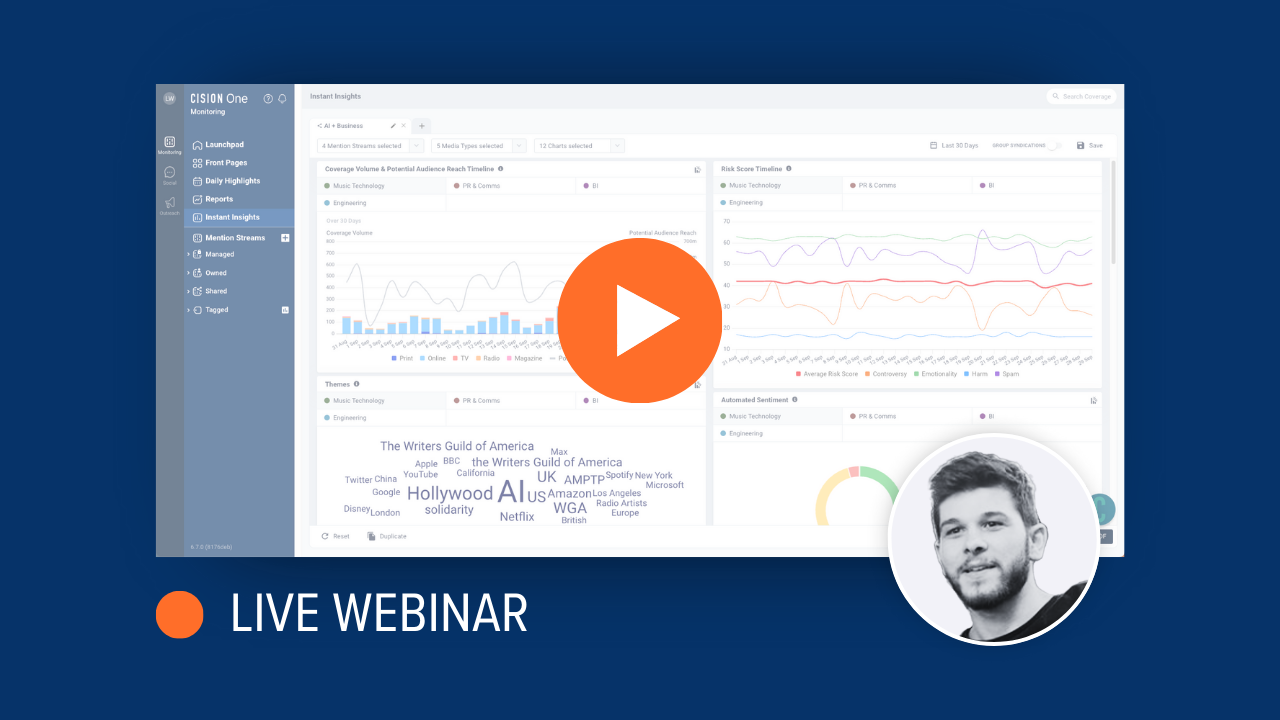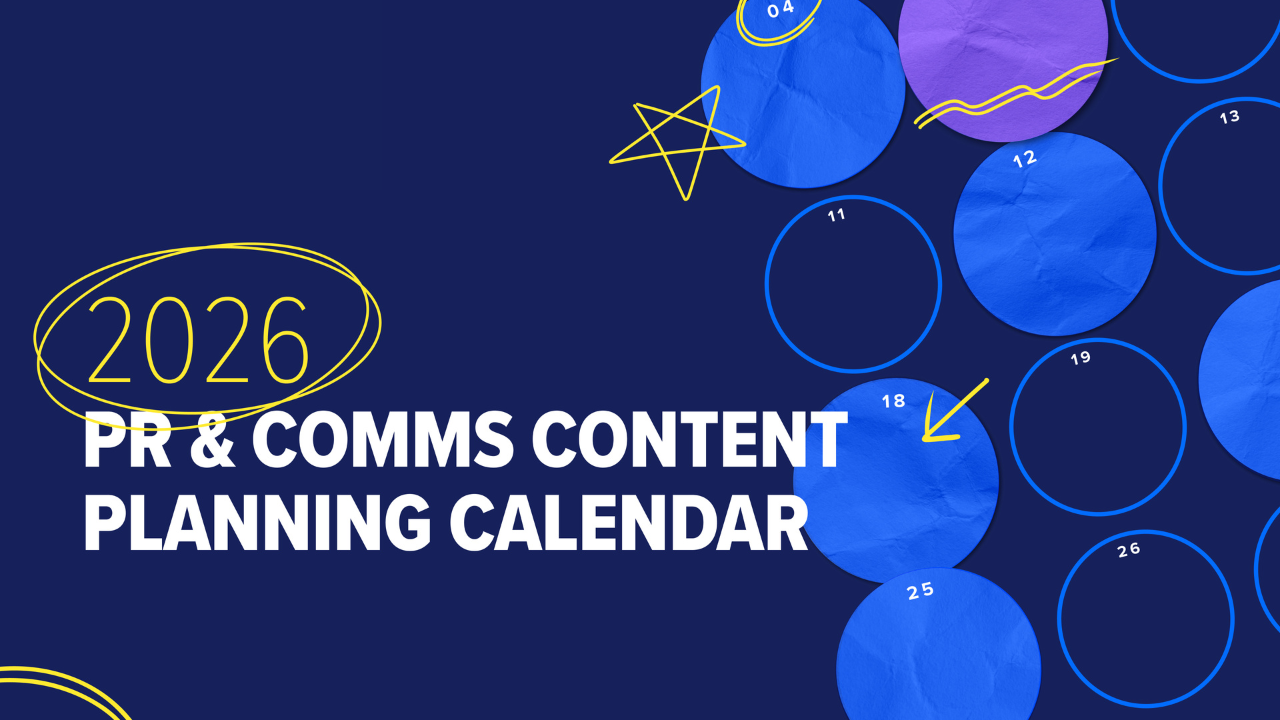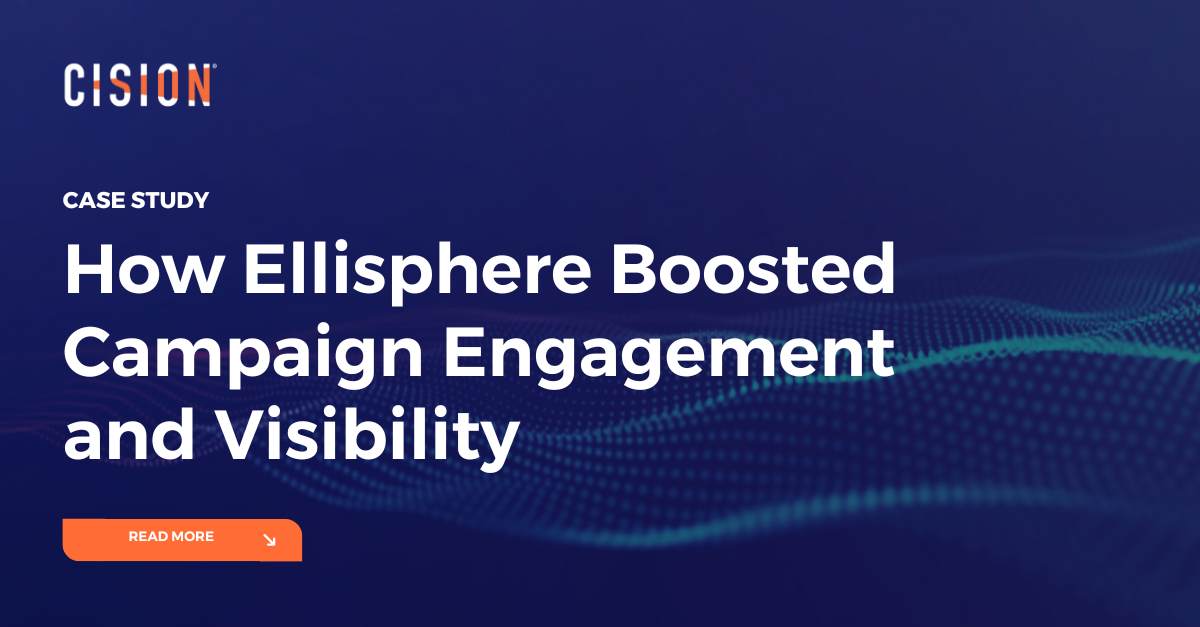The public relations world is embracing artificial intelligence. According to the 2025 Cision and PRWeek Comms Report, 67% of comms professionals say that generative AI is either “very much so” (23%) or “somewhat” present (44%) in their overall communications strategy.
As the technology filters into the key functions of PR and comms – and becomes integrated into the apps and platforms the industry uses – it’s clear to see the benefits it brings. However, with little regulation in place, there remain many questions about whether the risks outweigh the rewards of AI for PR.
That’s why we enlisted the help of AI experts Henry Ajder, founder of Latent Space Advisory, which specializes in helping business and political leaders navigate the fast-moving AI landscape; and Cision Senior Product Manager Luke Williams, who leads go-to-market campaigns for the AI-driven CisionOne platform, to answer the PR industry’s burning AI questions.
Ajder and Williams joined us for two webinars (now available on demand) – Demystifying AI in PR and Implementing AI Authentically in PR – to take us through their perspectives on the topic.
If you are short on time, we’ve provided the panelists’ thoughts on some of the biggest talking points and most pressing questions around AI in PR.
How do you define AI in the context of PR and comms?
AI isn’t new to PR and comms. It’s been working away in the background for years, crunching large volumes of data and providing the foundation for sentiment analysis and emotional recognition.
Ajder says the latest development in AI “is the ability of systems not just to recognize patterns and to predict, but also to wholly generate content.” He is referring to generative AI, enabled by tools like ChatGPT and Google Gemini.
Generative AI is already helping PR pros brainstorm campaign ideas, create content (think drafting press releases and social media posts), and summarize data. However, the next frontier is agentic AI, with capabilities shifting from assistant to autopilot.
Ajder explains: “Let's say you want to try and get better engagement amongst 20- to 35-year-olds on social media around a product launch or reputational management.
“You would give the agentic AI a general prompt like this, it would deploy various multimodal capabilities, different kinds of generative and traditional machine learning AI, ‘in the wild’ to achieve this end objective.
“So I think it's important to make that distinction as we start to see lots of excitement around AI. Generative AI is not agentic AI, and agentic AI isn't necessarily generative AI, but they often go hand in hand.”
What are the risks around the use of AI for PR?
Authenticity and accuracy are critical to PR. Trust can take years to build but be lost overnight with a press release or campaign that contains inaccuracies or doesn’t disclose AI usage.
Though there may be pressure from the C-suite to implement the technology, Ajder urges caution, citing examples of AI going awry, including Levi’s using synthetic images to diversify its models rather than employing human ones.
Another risk is AI’s ability to “hallucinate” false facts and statements, which is often the result of the large language models (LLMs) that power generative tools only making an estimation on the desired response to a command.
“These AI models are probabilistic machines,” says Ajder. “They make a calculation based on the huge amounts of data they have been trained on about what is most likely to come next in a sequence, [based on] your prompt.
“If I say ‘what color is grass?’, it will have learned based on the huge amount of data it's been trained on that the most likely word to follow in that sentence is going to be ‘green.’ But it's only a probabilistic estimation.”
Ajder explains that when a human answers this question, they know grass is green because they’ve seen it with their own eyes. AI does not have that capability, which can lead to hallucinations with AI tools “confidently overestimating their ability [and] saying things that sound very plausible, which are not.”
What are some practical first steps for PR teams in implementing AI?
As AI becomes a core part of how PR operates, Ajder admits that leadership at many organizations make the mistake of assigning large budgets and simply saying: “Okay, we’re doing AI now.”
“The first thing you should do [when implementing AI] is ask, ‘What is the fundamental question I’m trying to answer and what is the value I'm meaningfully trying to generate with this?’” he says.
“Setting clear parameters and KPIs as to how you're going to measure the impact of these technologies as deployed is critical to begin with.”
Though Ajder stresses the need for “experimentation and exploration,” more important is the careful implementation of AI.
“The moment that experimentation starts bleeding into direct implementation without the kind of procedures, structures, liability chains of command, and policies that have been communicated to your clients and to your stakeholders, that's where the problems potentially start to emerge,” he explains.
Williams adds that many of the applications PR pros use now include built-in AI tools. These are specifically designed to help teams tackle problems they encounter on a day-to-day basis, such as wrestling with complex Boolean queries.
“It can be very time consuming and even one small error in that search can mean you’re missing crucial coverage,” he said, adding the CisionOne’s AI Boolean creator can assist in building that search out from a keyword or phrase.
"We've seen this to be helpful, particularly for government or public sector teams where they're often trying to track fast moving narratives, new policy themes, or emerging risks across broad media,” he said. “They can set up those searches very quickly, respond faster and with more confidence without the need to rely on [Boolean] specialists.”
How should teams use AI in PR ethically and responsibly?
When it comes to ethics and responsibility, our AI experts say it’s important to draw a distinction between the two and keep human experience at the heart of the process.
“I think there are ways that you can use AI ethically, but perhaps for a certain company [using AI is] irresponsible,” Ajder says. “Vice versa, you can responsibly deploy AI content, which isn't necessarily to the ethical values of a client.”
Ajder also spoke of the need to obtain consent around what data is used to train any LLMs, alongside disclosing to clients and audiences when they’re seeing AI-generated content.
“We have an obligation to tell people what it is that they're consuming, so disclosure is critical,” he notes.
Williams noted the importance of PR pros retaining a human voice in any AI-generated content, thinking of it as an assistant rather than creating messaging entirely.
“AI can be used for automation and speeding up workflows, meaning it can free up time for PR pros to actually get back to being that authentic voice for a brand and driving that voice forward.”
What do PR pros need to know about deepfakes and misinformation?
Though generative AI tools have opened up possibilities for content creation, it also poses risks, including the spread of deepfakes and misinformation. Ajder acknowledges that this technology is increasingly being used with malicious intent.
“We've seen a lot of celebrities being targeted by imposter scams where someone puppeteers their likeness to sell a dodgy cryptocurrency scheme or perhaps a fraudulent investment or even a health product,” he said.
Ajder says it’s critical for organizations to understand the different risks AI presents, whether that’s falsely associating your brand with an unsuitable public personality or manipulating footage or words from a C-suite executive.
“[It’s important to] understand the capabilities [of AI] and understand how to respond; what you should and shouldn't do, and also have a game plan in place to respond,” he notes.
“There are ways to authenticate the media you are sharing so if there's a recording of someone speaking to the camera, it will have a content credential, which is like a digital nutrition label showing it's not AI edited/generated and directly from your brand.”
He adds: “There are ways to secure your own communications pipeline to show that you're the signal in increasingly realistic noise.”
Ajder suggests brands join Content Authenticity Initiative to learn how a growing list of organizations are authenticating their brand content through Content Credentials.
What does the future hold for AI and PR?
Giving a precise prediction on the next phase for AI in PR is always going to be difficult, but Williams believes the technology will get much better at drawing out predictive insights from the vast amount of data it collects.
“For example, getting those early warning signs of reputational risks from subtle changes in [coverage] tone or new topics that are popping up in even smaller media outlets or smaller social spaces way before these stories blow up,” he says.
"I think with these actionable insights, there's even greater opportunity to increase the value that PR can bring to an organisation.”
Ajder, from his perspective as a deepfake expert, believes PR pros will need to be nimble and react quickly as AI tools become more accessible, with more people able to generate content that could impact a brand.
“We're now starting to see voice cloning tools becoming open source, becoming commodified. [It’s] a Hollywood studio in your pocket,” he says.
“Once that [technology] is accessible to everyone, that will change our relationship with digital media and what truth looks like. Maybe our relationship with truth doesn’t change, but satisfying the conditions for what we believe to be true becomes increasingly difficult.
“I think in that kind of world, the adoption of content credentials and digital forensics capabilities is going to be essential in the toolkit of PR and comms professionals to navigate this world and help their clients do the same.”
More AI in Public Relations Resources
For more information on AI and how the technology is reshaping public relations, consider these related resources:
- The Complete Guide to AI in PR
- AI in Public Relations: Benefits & Examples
- Best Practices for Using AI in PR
- 16 Effective AI Prompts for PR Pros
- The Rise of Generative AI
To learn more about how CisionOne can help you navigate the challenges and opportunities of AI and PR, get in touch to speak with an expert today.
Most Recent Posts
Cision Resources
-
E-books and Guides
Comprehensive how-to guides on strategy and tactics
-
Case Studies
What are other brands doing – and how can we learn from them?
About Simon Reynolds
Simon is the Senior Content Marketing Manager at Cision. He worked as a journalist for more than a decade, writing on staff and freelance for Hearst, Dennis, Future and Autovia titles before joining Cision in 2022.
Learn More. Do More. demo new
PR Tips, Case Studies, and Product Updates

[On-Demand Webinar] The Next Generation of Media Intelligence: From Gorkana to CisionOne
Explore CisionOne, a revolutionary media intelligence platform, and the evolution of Gorkana. Learn key features and strategies from Luke Williams, CisionOne Product Marketing Manager. Elevate your media outreach to new heights!


